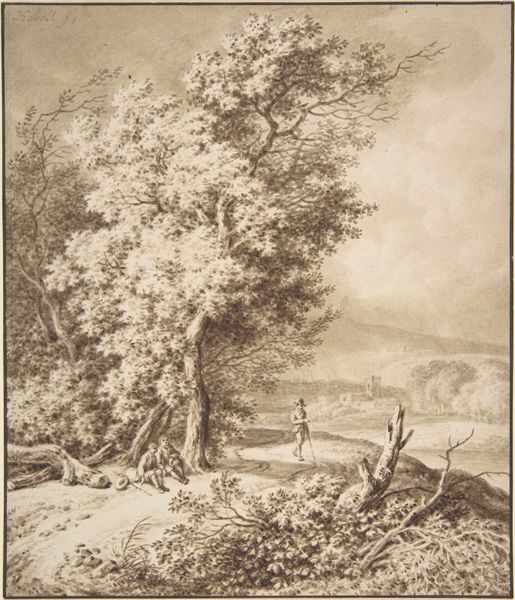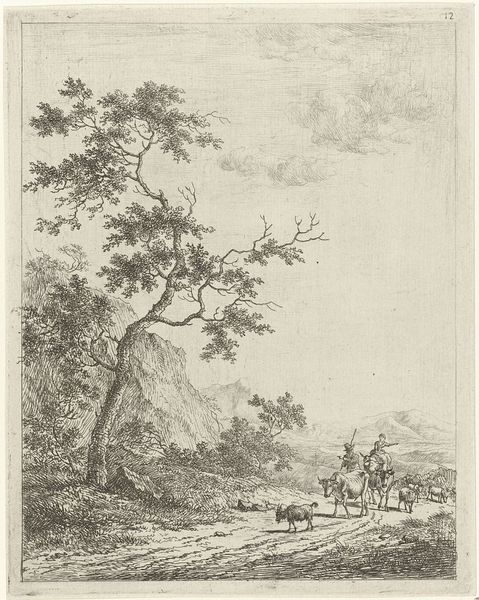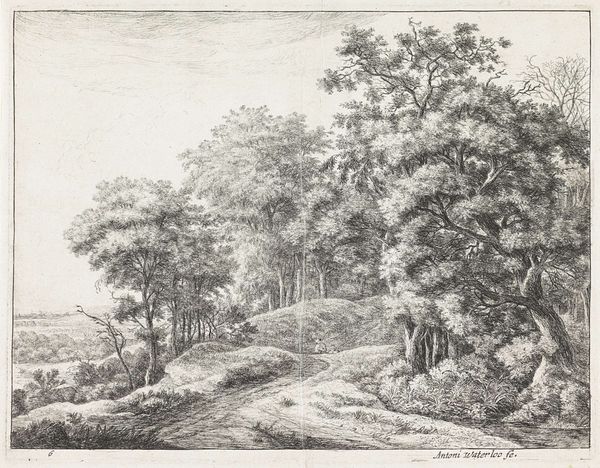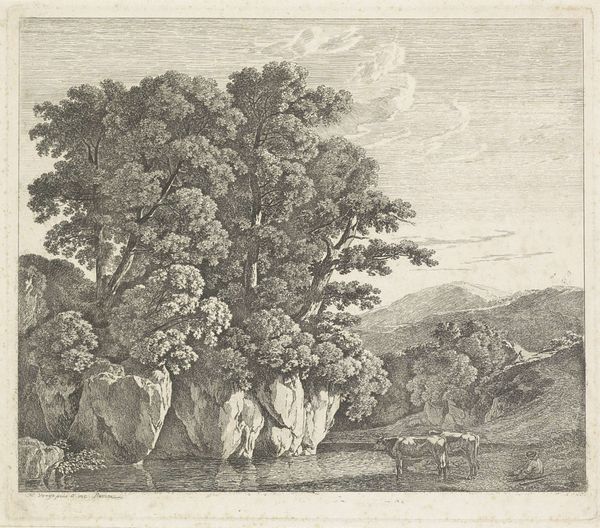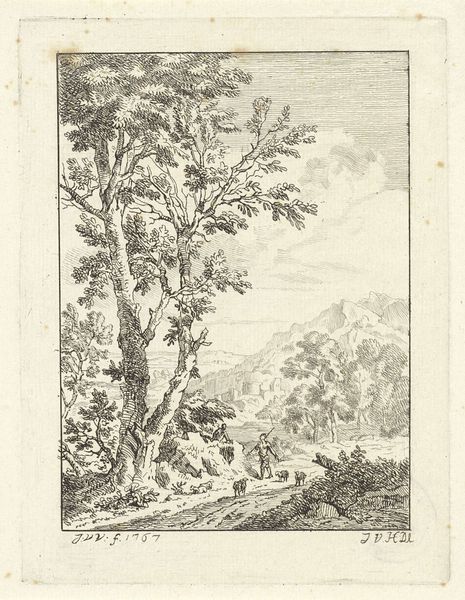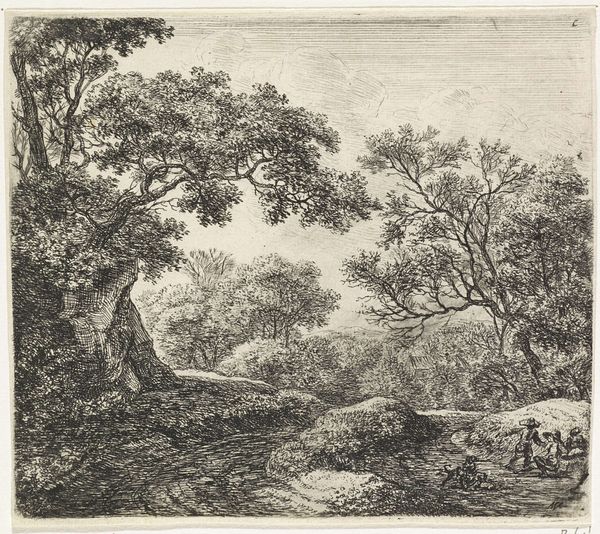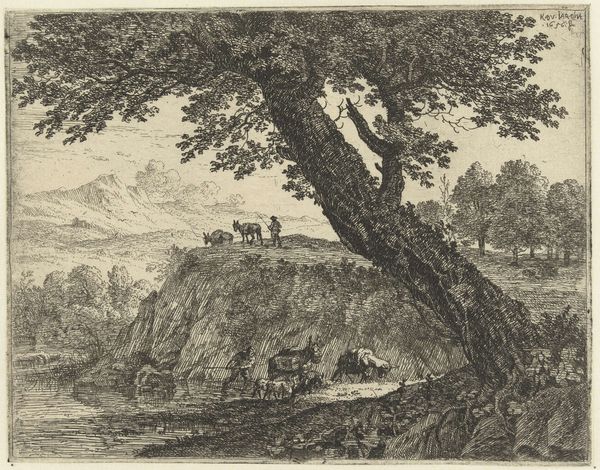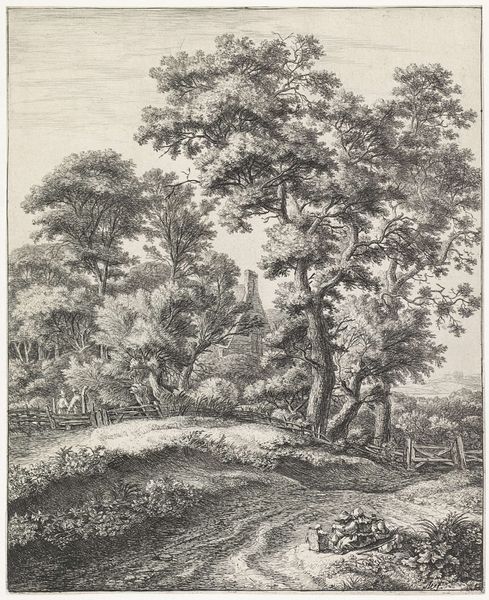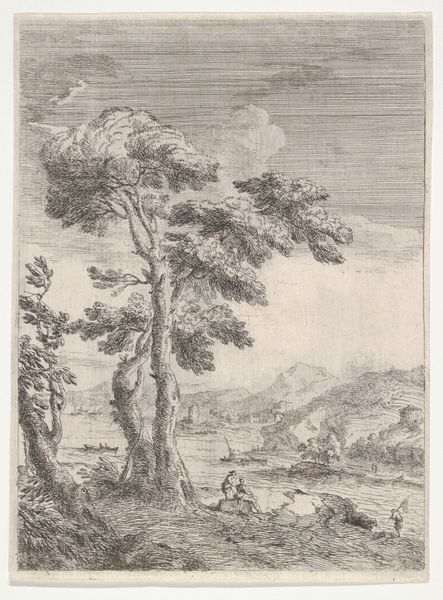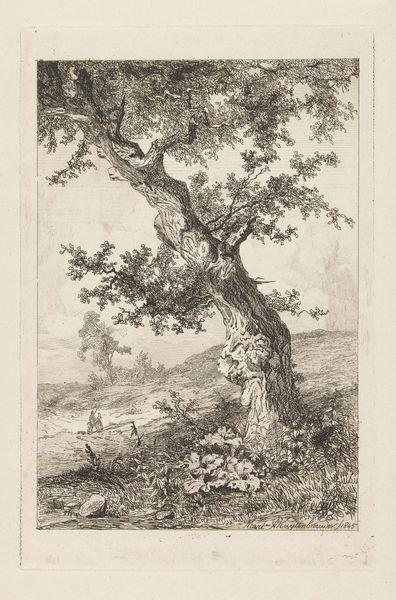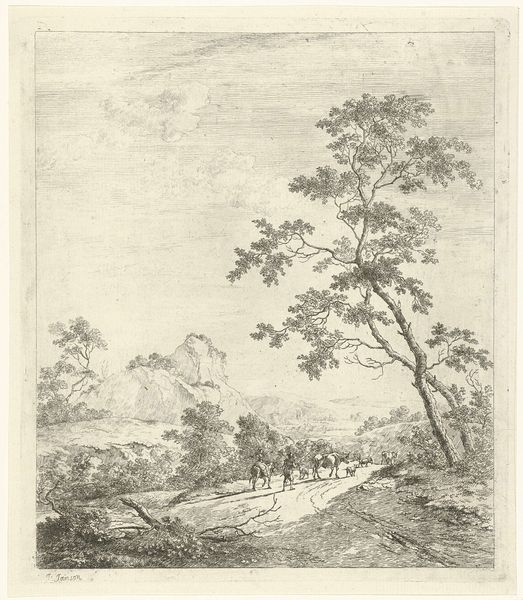
drawing, etching
#
drawing
#
baroque
#
dutch-golden-age
#
etching
#
landscape
#
etching
#
figuration
Dimensions: height 246 mm, width 191 mm
Copyright: Rijks Museum: Open Domain
Curator: "De Hermitage," dating between 1636 and 1687, an etching by Jacob Esselens, invites us to reflect on the quietude found in nature and the symbolism inherent in simple, pastoral scenes. What are your first impressions? Editor: The first thing that strikes me is this lovely, almost ethereal light filtering through the leaves of the grand central tree, highlighting that rustic hermitage nestled at its base. It gives it this lovely, melancholic air. Almost like a memory... Curator: The image contains several layers of visual symbols related to this idea of hermitage, that might explain your feelings. See the distant mountain echoing serenity and permanence? And notice how that central tree functions as a sort of axis mundi, connecting heaven and earth? The hermitage beneath the tree suggests retreat and contemplation. These symbols resonated deeply during the Baroque era, carrying potent associations. Editor: True! It's more than just a charming landscape. Esselens manages to suggest humanity's need for spiritual solace in an increasingly complex world. It makes me consider how something as fundamental as a landscape can symbolize profound existential needs, even hundreds of years after it was created. Also, what about the tiny cross that peeks in the background? It reinforces the idea that this really has a religious connotation to it. Curator: Absolutely. The cross on the small church underscores the sacral quality, marking this isolated locale as one specifically designated for worship and isolation. Esselens subtly weaves religious elements in the secular composition. We can notice an intentional, almost invisible cross erected next to a poor construction to protect whoever inhabits there. Editor: So, we move from the grand—a whole mountainscape!—to the miniature with figures barely visible, each element carefully placed to generate an introspective mood. Looking closely, you almost feel you can walk into it! I mean, as long as you accept the idea to live in a lonely place, though. Curator: Esselens has undoubtedly achieved something quite lasting here. The interplay of light, symbol, and emotion continues to invite introspection, offering, in essence, a quiet and thoughtful moment for those who stand before it. Editor: Yes, I think its persistent emotional quality resides in its invitation to explore the human relationship with the spiritual significance we see in natural settings, right? That kind of exploration will be with us until the end of times, making it something more than just ink on paper.
Comments
No comments
Be the first to comment and join the conversation on the ultimate creative platform.
